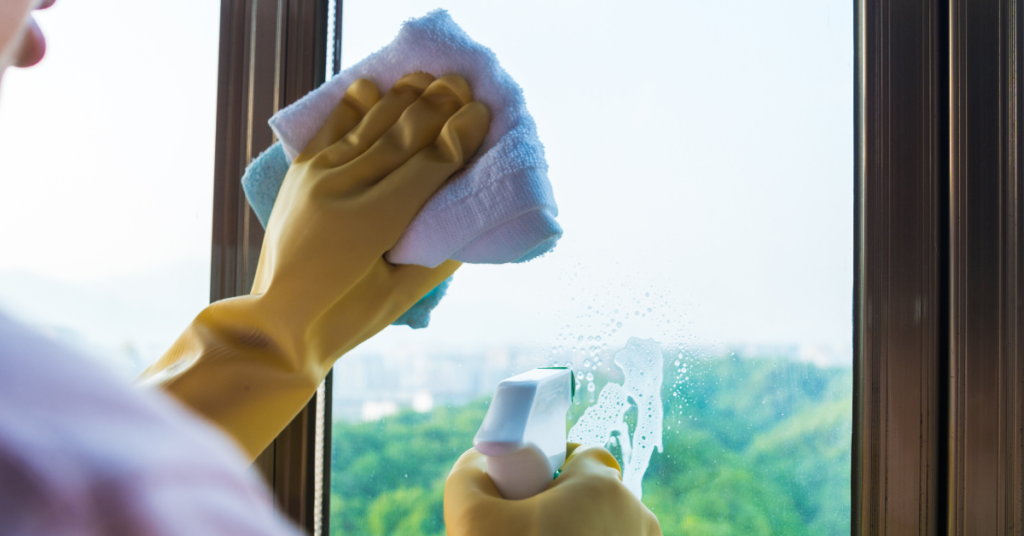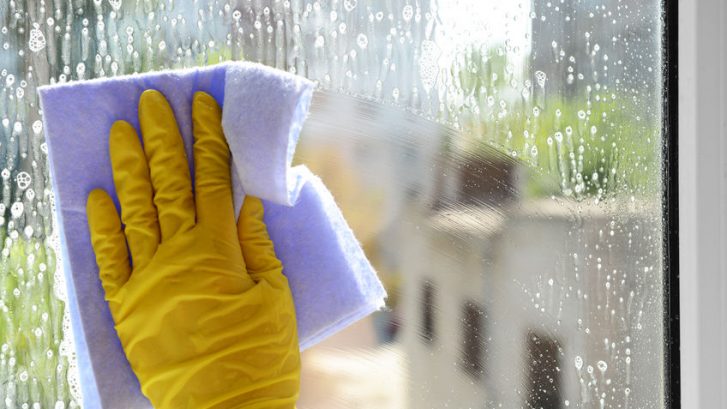Windows may appear smeared or streaky after cleaning for several reasons. Common causes include using dirty cleaning tools, using the wrong cleaning solution, hard water stains, poor cleaning technique, letting the solution dry on the glass, residue from previous cleanings, high humidity, and low-quality cleaning products.
Furthermore, to avoid streaks, use clean and lint-free cloths, the right cleaning solution in moderation, and ensure proper wiping technique. Address hard water stains with vinegar or a stain remover, and remove existing residue. Clean on less humid days, and invest in quality cleaning products. By following these tips, you can achieve sparkling, streak-free windows.
What are the top causes of smeared windows?

The top causes of smeared windows include using dirty cleaning tools, incorrect cleaning solutions, hard water stains, poor cleaning technique, incorrect timing, residue from previous cleanings, high humidity, and low-quality cleaning products.
Dirty Cleaning Tools
When you use dirty or contaminated cleaning cloths, sponges, or squeegees, you essentially spread existing dirt and residue onto the glass surfaces. This can result in windows that appear smeared, as the very tools meant to clean the windows become carriers of additional grime.
Furthermore, to prevent the transfer of dirt and grime, make sure to start with clean cleaning tools. Use lint-free microfiber cloths that won’t leave fibers behind. Regularly wash and maintain your cleaning tools to ensure they remain free of contaminants. This simple step can significantly improve the cleanliness of your windows and prevent streaks.
Incorrect Cleaning Solution
Using an inappropriate cleaning solution or applying it excessively can lead to residue on the glass. Some cleaning products contain ingredients that may not work well on glass, leaving streaks behind.
Additionally, using too much of any cleaning solution can overwhelm the surface, making it difficult to wipe off entirely and leading to visible streaks and smears.
Use an appropriate glass cleaner or a water-vinegar mixture and apply it sparingly:
Choose a glass cleaner specifically designed for the task, as it is formulated to clean without leaving streaks. Alternatively, you can create your own solution by mixing water and white vinegar in equal parts, which is effective and economical.
Apply the cleaning solution sparingly, ensuring even coverage, and then thoroughly wipe it off with a clean cloth. This approach helps avoid residue and leaves your windows streak-free.
Hard Water Stains
Hard water stains occur when minerals like calcium and magnesium in your water supply build up on glass surfaces over time. These mineral deposits can create a cloudy or hazy appearance on your windows, leading to streaks and smears.
Remove hard water stains with a water-vinegar mixture or commercial stain removers
To tackle hard water stains, you can use a solution of equal parts water and white vinegar. Apply the mixture to the affected areas, let it sit for a few minutes, and then gently scrub the stains with a non-abrasive pad. Rinse the glass thoroughly and dry it to reveal clean and streak-free windows.
Alternatively, you can opt for commercial hard water stain removers, which are specifically formulated to dissolve and remove these mineral deposits.
Poor Technique
Inconsistent wiping and improper motion during cleaning can result in streaks on windows. Cleaning in a haphazard or circular motion can spread dirt and cleaning solution unevenly, creating streaks as the solution dries. Inadequate pressure or uneven pressure during wiping can also lead to uneven results.
Use the correct wiping technique with even pressure
To achieve streak-free windows, use a systematic top-to-bottom or side-to-side motion while wiping. Apply even pressure across the glass surface to ensure that you remove all the cleaning solution and dirt consistently.
Furthermore, this technique promotes a uniform and clean finish on your windows, preventing streaks caused by inconsistent cleaning methods.
Incorrect Timing
Allowing the cleaning solution to dry on the windows can result in streaks because the liquid evaporates, leaving behind residues and streaky marks. When the solution dries, any dirt or contaminants suspended in the liquid can settle on the glass, making it difficult to achieve a clean finish.
Work in smaller sections and wipe while the solution is still wet
To prevent the cleaning solution from drying prematurely, divide your window into smaller, manageable sections. Apply the solution to one section at a time and immediately follow up with wiping.
This approach ensures that you can thoroughly remove the cleaning solution while it’s still wet, reducing the chances of streaks caused by dried residue.
Residue from Previous Cleanings
Over time, if windows are not thoroughly cleaned on a regular basis, residue from previous cleaning attempts can accumulate on the glass. This residue may include cleaning product remnants, minerals, or dirt left behind after incomplete cleaning. When new cleaning attempts are made, this old residue can interfere with achieving a streak-free finish.
Thoroughly clean the windows to remove any existing residue
To address this issue, it’s essential to start with a clean slate. Prior to your regular cleaning routine, take extra time to thoroughly remove any existing residue from the glass. You can use a mixture of water and vinegar or a commercial glass residue remover to dissolve and eliminate the old buildup. This prepares the glass for a fresh and streak-free cleaning.
Humidity
High humidity levels can lead to the cleaning solution evaporating rapidly when applied to the glass. The moisture in the solution can be absorbed by the humid air, leaving behind streaks and residues on the windows. The quick evaporation process doesn’t give you enough time to wipe the solution off effectively.
Clean on low humidity days or when the weather is overcast
To avoid the negative effects of high humidity, it’s best to choose a day with lower humidity levels for window cleaning. Overcast or cooler days are often ideal, as they allow the cleaning solution to stay wet for a longer period, giving you ample time to wipe it off without streaks. Cleaning in the morning or evening when the sun is less intense can also be beneficial.
Low-Quality Cleaning Products

Low-quality or outdated cleaning products may contain ingredients that are not effective in providing a streak-free finish. These products might leave behind residues or have lost their cleaning efficacy over time, resulting in streaks on the windows.
Invest in quality cleaning products and check expiration dates
To avoid the issues associated with subpar cleaning products, invest in high-quality glass cleaners that are specifically formulated for the task. Check the expiration dates on your cleaning products to ensure they are still effective.
Quality products are more likely to clean effectively and leave your windows streak-free. Investing in the right cleaning supplies can make a significant difference in achieving clear and pristine windows.
FAQ’s
Why do my windows get streaky after cleaning?
Streaks can happen due to dirty tools, improper cleaning solutions, or techniques.
How can I prevent streaks on my windows?
Use clean, lint-free tools, choose the right cleaning solutions, and wipe in straight lines.
What’s the best way to remove hard water stains?
Mix equal parts water and vinegar or use a commercial stain remover.
Can humidity affect window cleaning?
High humidity can cause the cleaning solution to dry too quickly, leading to streaks.
Do I need special cleaning products for windows?
Quality glass cleaners work best, but a water-vinegar mixture can be effective too. Check expiration dates on cleaning products.
Final Words
To make your windows look clear and without streaks, you need to deal with the reasons they get smeared. This means using clean tools, not using too much cleaning stuff, and getting rid of hard water marks properly. You should also wipe the right way, keep things from drying too soon, and get rid of old gunk.
Picking the right day to clean and using good cleaning products is also important. By doing these things, you can have nice, shiny windows that make your home look better.

